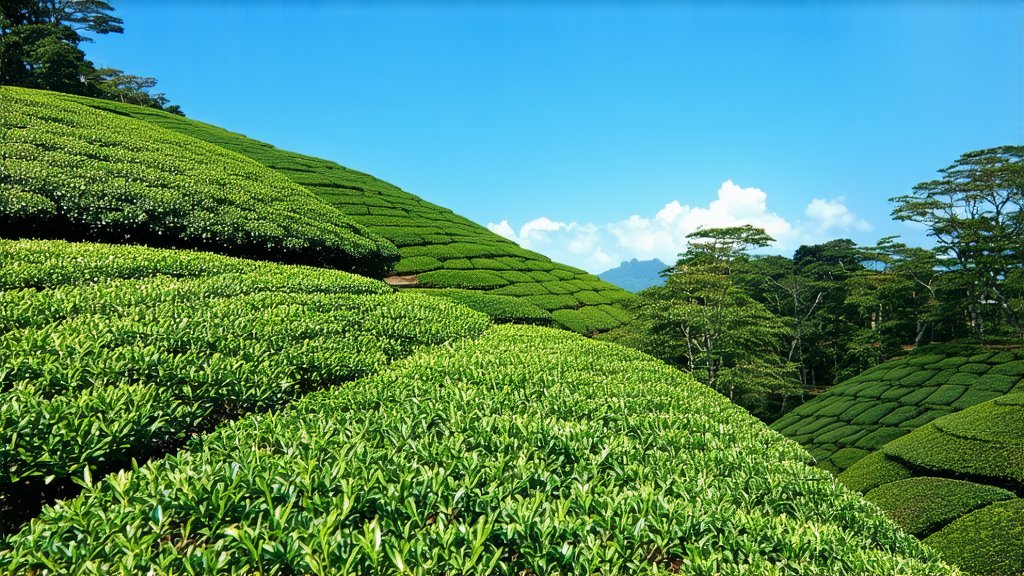
Ti Kuan Yin, also known as Iron Goddess of Mercy, is one of the most revered and celebrated varieties of oolong tea in China. This exquisite tea hails from Anxi County in Fujian Province and has a rich history that dates back to the early Qing Dynasty. Its name reflects its delicate yet powerful character, much like the compassionate goddess it is named after. In this article, we will delve into the fascinating history, diverse types, intricate production process, and artful tasting methods of Ti Kuan Yin Oolong tea.
Historical Background
The origin of Ti Kuan Yin can be traced back to the early 18th century. According to legend, a poor scholar named Weiyin discovered a wild tea plant on the cliffs of Anxi. He brought the plant home and propagated it. The tea made from these leaves was so exceptional that it won the scholar first place in an imperial examination. Grateful for his success, he attributed it to the divine intervention of the Bodhisattva Guanyin, hence naming the tea "Iron Goddess of Mercy." Over the centuries, Ti Kuan Yin has become synonymous with high-quality oolong tea.
Types of Ti Kuan Yin
There are several types of Ti Kuan Yin, each with distinct characteristics:
- Xiang Xing (Fragrant Heart): Known for its strong floral aroma and slightly sweet taste.
- Chun Shui (Spring Water): Offers a fresh, light flavor with a hint of sweetness.
- Rui Shan (Sharp Mountain): Features a more robust, full-bodied flavor with pronounced floral notes.
- Huang Jin Gui (Golden Osmanthus): Named for its osmanthus-like fragrance and smooth, creamy texture.
- Bai Ya Xiang (White Cockatoo): Known for its orchid-like aroma and complex flavor profile.
Each type has its unique growing conditions, harvesting times, and processing techniques, contributing to their distinctive qualities.
Production Process
The production of Ti Kuan Yin involves a meticulous and time-consuming process that includes several key steps:
-
Plucking: Tea leaves are handpicked, usually selecting only the top two leaves and a bud. The best leaves are often plucked in the early morning when they are at their freshest.
-
Withering: The freshly picked leaves are spread out in thin layers and left to wither under the sun or in shade. This step reduces the moisture content in the leaves and prepares them for the next stages.
-
Tossing and Turning: The leaves are tossed and turned in large woks to initiate oxidation. This step is crucial as it determines the level of oxidation, which affects the tea's flavor and aroma.
-
Fixation: The leaves are briefly heated to stop the oxidation process. This step preserves the tea's greenish hue and locks in its flavors.
-
Rolling: The leaves are rolled to shape the final product and further release the essential oils and flavors.
-
Drying: Finally, the tea is dried to remove any remaining moisture, ensuring its longevity and stability.
Tea Tasting (Gongfu Cha Ceremony)
Tasting Ti Kuan Yin is not just about drinking tea; it’s a ritual known as the Gongfu Cha ceremony, which translates to "making tea with skill." Here’s how to properly enjoy this exquisite tea:
-
Preparation: Gather all necessary tools including a gaiwan (lidded bowl), teapot, cups, and a pitcher of hot water (around 200°F or 93°C).
-
Warming the Utensils: Rinse the gaiwan and cups with hot water to warm them up and cleanse any residual flavors.
-
Steeping: Place about 5 grams of Ti Kuan Yin into the gaiwan. Pour hot water over the leaves and quickly rinse them, then discard this initial steep. This step "wakes up" the leaves.
-
First Infusion: Add hot water for the first infusion, typically lasting about 15-20 seconds. This quick steep extracts the tea's initial flavors and aromas.
-
Subsequent Infusions: For each subsequent steep, gradually increase the steeping time by about 10 seconds. Ti Kuan Yin can typically be steeped 7-10 times, each revealing different facets of its character.
-
Smelling the Aroma: After each steep, take a moment to appreciate the aroma by bringing the lid of the gaiwan close to your nose and inhaling deeply.
-
Savoring the Flavor: Sip the tea slowly, allowing it to coat your palate and savor the intricate flavors and textures. Notice the balance between sweetness, bitterness, and umami.
-
Observing the Leaves: After the final infusion, examine the leaves to appreciate their color and texture, which can provide insights into the quality of the tea.
Conclusion
Ti Kuan Yin Oolong tea is more than just a beverage; it is a cultural treasure that embodies the essence of Chinese tea culture. From its legendary origins to its intricate production process and the artful ceremony of its tasting, Ti Kuan Yin offers a profound sensory experience that transcends time and space. Whether you are a seasoned tea connoisseur or a curious newcomer, exploring the world of tea, Ti Kuan Yin is sure to captivate your senses and leave a lasting impression on your heart.